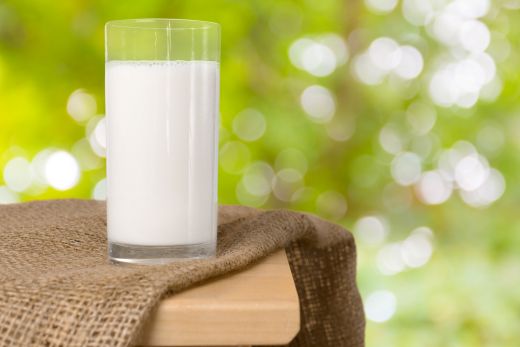2200

European context: rising demand, higher standards
In the European Union, raw milk production reached approximately 160.8 million tonnes in 2023, marking a slight increase compared to 2022 (Eurostat). At the same time, the EU has set an ambitious target: 25% of agricultural land to be under organic farming by 2030 (versus ~10.5% in 2022). This framework is pushing the industry toward higher value-added segments – including organic milk and premium ranges (A2, lactose-free, with extended traceability).
Romania in the European milk landscape
Romania remains a modest player in EU milk deliveries, with ~0.8% of the total delivered in 2024. However, domestic dynamics have improved: the quantity of milk collected by processors increased by 4.6% compared to 2023, while in December 2024 collections were up by 8.8% year-on-year (INS). At the same time, raw milk imports grew by 38.7% in 2024, reflecting seasonal dependence and competitive pressure.
In the “eco” area, Romania reached 4.3% of utilised agricultural area (UAA) under organic farming (2021, Eurostat/FIBL), below the EU average of ~10.5% (2022). Even though the share remains small, long-term growth has been robust, making the shift toward organic dairy ranges a credible opportunity over the next 5–7 years.
What “premium” means in dairy in 2025
The premium segment includes lactose-free products, A2 milk, ranges with controlled origin (farm-to-bottle traceability), organic/PGI certifications/functional positioning, as well as sustainable packaging. European markets for these niches are expanding above the overall dairy average:
- Lactose-free: the European lactose-free dairy market was estimated at ~USD 5.09 billion in 2023, with a compound annual growth rate (CAGR) of ~6.4% through 2033.
- A2 milk: the European A2 market reached ~USD 635–638 million in 2024, with growth prospects of ~18% CAGR between 2025–2030.
For Romania, these trends mean room for premiumisation – especially in urban areas and modern retail – even if the base is still relatively small.
Demand: what Romanian consumers want
Three directions are consolidating:
- Health & tolerance: growing interest in lactose-free dairy and “easy to digest” formulations (e.g., A2).
- Organic & traceability: consumers are increasingly willing to pay a premium for organic certification and clear origin labeling. Romania applies COOL (country-of-origin labeling) for milk and dairy products – an advantage for premium segments.
- Sustainability: pressure from EU regulations and retailers encourages greener packaging and operations, reinforcing perceptions of quality.
Supply: where the bottlenecks are
- Production fragmentation: many small and medium farms remain undercapitalized. Modernizing collection and raw milk quality is essential to consistently supply organic/premium ranges.
- Organic certification & conversion: transitioning to organic involves costs and time; Romania still lags behind the EU average, a gap to be closed by 2030.
- Scaling premium production: lactose-free and A2 ranges require investments in technology and separate supply chains; not all facilities can sustain these costs.
Concrete opportunities for Romania (2025–2030)
- Regional organic networks: development of dedicated “organic” collection centers with cold logistics and labs, to aggregate compliant milk and ensure continuity for processors.
- Premiumisation in high-growth niches: targeted investments in lactose-free and A2 lines – segments with above-average growth rates in Europe.
- Farm-to-bottle traceability & labeling: leveraging COOL and digital technologies (QR, batch tracking) to justify price premiums.
- Operational efficiency: reducing import dependence by increasing cow productivity and securing long-term producer–processor contracts.
Target markets: where Romanian premium milk can perform
- Domestic modern retail: large cities, consumers with above-average income, high openness to “lactose-free”, “A2”, “local organic”.
- Regional exports: short premium batches (organic fresh cheeses, lactose-free UHT milk) to EU markets where the segment grows above average and private label brands are seeking competitive suppliers.
Conclusion
Demand for organic and premium milk is real and growing, with the European framework pushing in the same direction. Romania starts from a low share and an organic area below the EU average, but 2024 showed improved milk collection and a market increasingly receptive to higher value-added segments.
The key over the next 3–5 years: organic-compatible collection infrastructure, selective investments in premium technologies (lactose-free, A2), clear traceability, and stable partnerships between farmers, processors, and retailers.
Where these elements align, Romania can move from competing on price to building brand and margin.
(Photo: Freepik)




